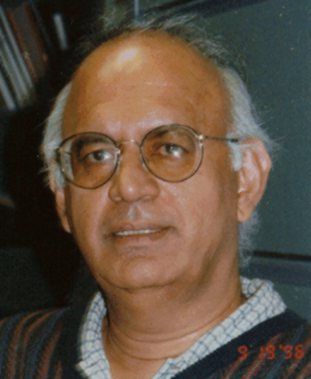 biSOAR, a bimodal version of the cognitive architecture SOAR, developed by researchers of Laboratory for Artificial Intelligence Research (LAIR) - Director Balakrishnan Chandrasekaran (Department of Computer and Information Science, The Ohio State University), Columbus, OH, USA and Unmesh Kurup from Carnegie Mellon University, Pittsburgh, Pennsylvania, USA.
biSOAR, a bimodal version of the cognitive architecture SOAR, developed by researchers of Laboratory for Artificial Intelligence Research (LAIR) - Director Balakrishnan Chandrasekaran (Department of Computer and Information Science, The Ohio State University), Columbus, OH, USA and Unmesh Kurup from Carnegie Mellon University, Pittsburgh, Pennsylvania, USA.
Email: Этот адрес электронной почты защищён от спам-ботов. У вас должен быть включен JavaScript для просмотра. | Этот адрес электронной почты защищён от спам-ботов. У вас должен быть включен JavaScript для просмотра. | biSOAR website | See also Soar Homepage
Общие сведения
Когнитивная архитектура biSOAR разрабатывается исследовательской группой по проекту под руководством Балакришнана Чандрасекарана (Balakrishnan Chandrasekaran), директора Лаборатории исследований по ИИ (Laboratory for Artificial Intelligence Research - LAIR) Отделения вычислительной техники и информатики (Department of Computer and Information Science) униферситета штата Огайо (The Ohio State University), Колумбус, Огайо, США и Унмеша Курупа (Unmesh Kurup) из Университета Карнеги-Меллона (Carnegie Mellon University), Питтсбург, Пенсильвания, США.
To create biSoar (Kurup & Chandrasekaran, 2006), a general-purpose cognitive architecture, Soar (Laird et al., 1987) was augmented with the Diagrammatic Reasoning System (DRS) (Chandrasekaran et al., 2004), a domain independent system for representing diagrams. In DRS, diagrams are represented as a configuration of points, curves and regions.
BiSoar (Kurup, 2008) is an extension of Soar that retains Soar’s basic architectural elements, its view of how problem-solving works, and the chunking mechanism for learning, but treats the cognitive state as bi-modal.
One of the modes is the traditional symbolic state representation, but a new one, a diagrammatic mode, is added.
Knowledge in LTM, representations in WM, and goals can all be bimodal.
Publications
1. Kurup, U. (2008). Design and Use of a Bimodal Cognitive Architecture for Diagrammatic Reasoning and Cognitive Modeling. Ph.D. dissertation, Dept. Of Computer Science & Engineering, The Ohio State University, Columbus, OH.
2. http://bldr-webtest.alionscience.com/AdaCta/Chapters/FM%20Files/21Chandra.pdf


